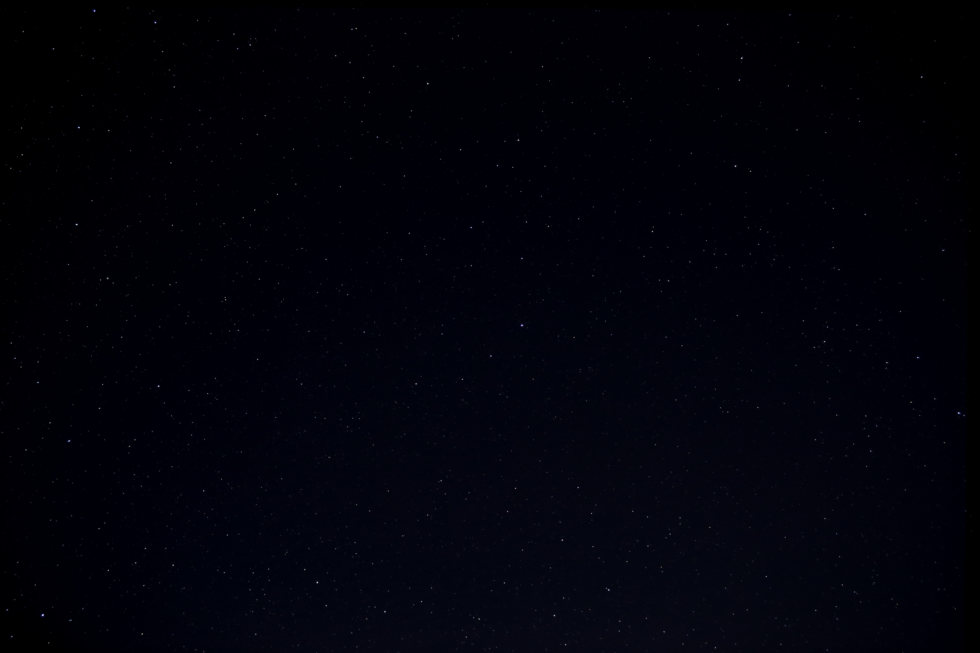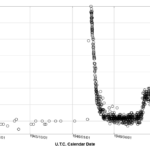An overview of the constellation Corona Borealis
Dr. Achim Tegeler, May 16, 2024
The constellation Corona Borealis is easily found between the constellations Bootes and Hercules. It shows an open-to-the-top ring structure formed by seven relatively well-recognizable stars. We find very interesting stars here...
The brightest of these structures, which were seen as a "crown" in the antique Greek is α CrB, also called Gemma (Latin for gemstone) or Alphecca (Arabic: al-fakkah = the broken (ring)).

The consteallation Corona Borealis between constellations Herculs and Bootes. Infos on mouseover. Photo: Gerold Holtkamp
The Corona Borealis is considered quite inconspicuous, but it contains interesting variable stars, double stars and galaxy clusters (Abell 2065 (about 400 galaxies) and Abell 2142 (two merging galaxy clusters [1])).
α CrB is about 75 light years away from Earth and belongs to spectral class A0. In addition, this star is a photometric double star, which decreases its brightness by about 0.1 mag every 17.36 days because a dimmer companion star passes in front of it.
The Northern Crown contains other variable stars that change their brightness due to different physical processes.
So R CrB is the archetype of variable stars (RCB stars) that change their brightness at indeterminate time intervals. However, the change in brightness is not due to a companion star, but it is assumed that these stars eject parts of their gas envelope of helium and carbon from time to time, and the carbon then condenses into soot-like, opaque clouds. In the process, the brightness of the star decreases by up to nine magnitudes, and then, after the drift of the "soot cloud", slowly reaches the original brightness of about 5.7 mag again [2].
S CrB is a variable star of the Mira variables [3], which changes its brightness every 360 days. Mira variables are long-periodically variable stars (intervals between 80 and 1000 days) that pulsate by the Kappa-mechanism . The kappa mechanism represents a pulsating change in the hydrostatic equilibrium in the star, in which oscillating back and forth between outward-acting radiation pressure and inward-acting gravity. The reason for this pulsation is explained in the opacity (impermeability) in some parts of the star's surface, which pulsates to build up and break down again depending on temperature and pressure [4]. This mechanism is also the reason for the pulsation of brightness in Cepheids, but these show a very high regularity, so that in Cepheids there is a direct dependence between luminosity and pulsation duration (period-luminosity relationship).
U CrB is a so-called Algol star, a binary star system in which two stars orbit each other in the plane of view towards Earth, each with two typical dips in brightness: a smaller dip when the larger, brighter star occults the smaller one, and a larger dip when the dimmer low-mass star occults the larger one [5].
However, the most interesting star in the Corona Borealis is currently T CrB, a cataclysmic double star system [6] with a recurring nova. Here, two stars orbit each other, a smaller white dwarf, which subtracts mass from its companion, a red giant – the so-called accretion. In this accretion, the matter around the white dwarf accumulates in an accretion disk and then, at a certain critical mass, flows to the surface of the white dwarf. There the potential energy is released in the form of a nova. This nova is so bright that the star, which is actually difficult to see, will suddenly become the brightest object in the Northern Crown. The whole spectacle will last only a few days, and then move back to the phase of mass accretion, which will again take about 80 years. The kosmos-os team is observing the star T CrB very closely in order to be able to document the spectacle expected in spring 2024. We have a separate report on this special event, which you can find look here .
All in all, the Corona Borealis is a treasure trove for all amateur astronomers who deal with variable or double stars.
Here you can find further contributions concerning Corona Borealis
- T Coronae Borealis – The Nova in the futureA star in the constellation Northern Crown is described, for which a drastic increase in brightness is expected this year 2024. The historical events of this nova are discussed, but above all the current state of knowledge about this star, which lights up regularly about every 80 years.
Sources:
[1] J. Patrick Henry and Ulrich G. Briel 1996 in ApJ 472 137 „AN X-RAY TEMPERATURE MAP OF ABELL 2142“
[2] Howell, Steve B., Rector, Travis A., Walter, Donald in Publications of the Astronomical Society of the Pacific, Volume 125, Issue 930, pp. 879 (2013)
[3] Mira stars https://en.wikipedia.org/wiki/Mira_variable
[4] T. Gastine and B. Dintrans A&A 484, 29-42 (2008) Direct numerical simulations of the κ-mechanism
[5] Algol stars https://en.wikipedia.org/wiki/Algol_variable
[6] Cataclysmic binary stars https://de.wikipedia.org/wiki/Kataklysmisch_ver%C3%A4nderlicher_Stern
